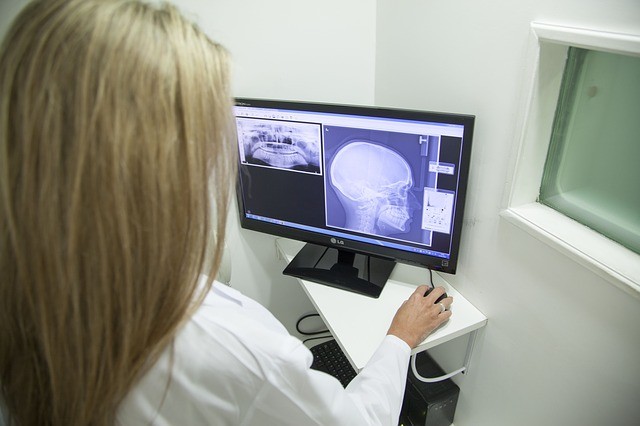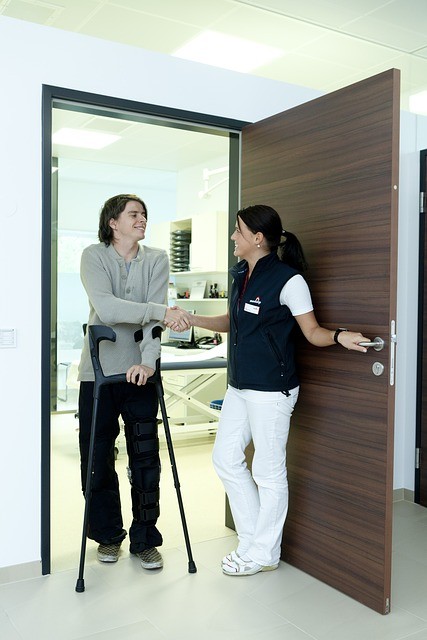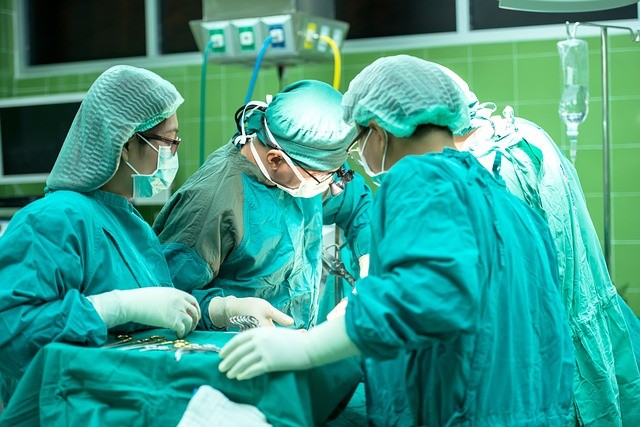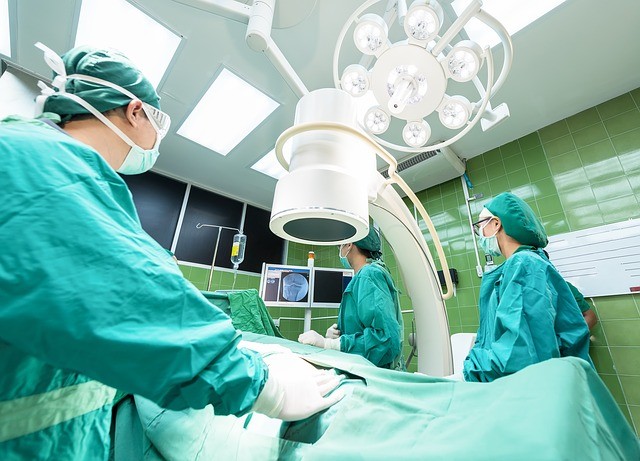Healthcare workers make diagnoses and prognoses all day long, but it isn’t always easy for them to recognize signs and symptoms of injury in themselves. Although hospitals and other healthcare facilities are clean, sterile, and safe, workers in hospitals, nursing homes, and long-term care facilities have the highest work-related injury and illness rates in the country. Many of these work-related injuries are musculoskeletal disorders that can be prevented with proper ergonomics.
Injuries can happen by:
- Lifting patients from beds or wheelchairs
- Prolonged periods of sitting or standing with awkward postures, such as in surgery
- Prolonged, repetitive hand/finger movements
- Pushing heavy carts or beds
Work-Related Musculoskeletal disorders (MSDs)
“Work-related musculoskeletal disorders (WMSDs) are a group of painful disorders of muscles, tendons, and nerves. Carpal tunnel syndrome, tendonitis, thoracic outlet syndrome, and tension neck syndrome are examples.“ Source
Symptoms of MSDs are characterized by pain, swelling, numbness, and loss of mobility. They can present itself in the neck, shoulders, elbows, knees, wrists, hands, fingers, thumbs, feet, and toes. Health care providers are at especially high risk of back injuries.
If any of these symptoms are reported by healthcare workers, it’s important to take them as seriously as any other injury that comes through the door.
Treatment for MSDs
- Restriction of Movement
- Heat/Cold Application
- Light Exercise
- Medication
- Surgery
Prevention
Your workers are up against risk factors every day, and it’s your job to try and prevent injury. There are plenty of things you can implement to reduce their risk.
Work Environment
Patient Lifts
Patient lifts are a great tool for both employees and patients; if the employee is more comfortable lifting the patient, then the patient is sure to feel the same. More importantly, it keeps the risk of back injury at bay. There are many patient lifts on the market, so do your research before purchasing one.
Ergonomic Workstations

Some healthcare workers spend a lot of time sitting on a computer. Getting them set up at an ergonomic workstation can help reduce the risk of injury and be more comfortable. Here are the basics:
- Position computer monitors about an arm’s length away from the worker and set to just below eye level to reduce eye strain.
- Reduce risk of back strain by purchasing adjustable chairs with head and arm rests. Arm rests should be positioned so the worker can comfortably bend their arm at a 90-degree angle.
- Invest in ergonomic mice and mouse pads with wrist support to reduce pressure on the wrist.
Comfortable Shoes
Encourage workers to invest in proper footwear. Properly fitted and supportive shoes prevent back injuries, especially for those who spend a lot of their day walking on a hard surface.
Organizational Interventions

Frequent Breaks
Workers should learn to recognize when tasks are too much for their body to handle. It’s a big (if not the biggest) preventative measure for MSDs.
For example, if their fingers or hands begin to go numb after hours on the computer or in the operating room, it’s a sure sign they need to take a break to prevent further injury. Urge workers to recognize and understand the signs of fatigue, and provide frequent breaks so they can keep their body moving.
Safe Patient lifting
Using lifts is one of the best ways to prevent an injury while lifting a patient, but it’s not always in the budget
Without access to mechanical lifts, the best way to prevent injury is to effectively plan lifts. The basic procedure for planning a successful patient lift is:
- Summon assistance if needed.
- Acquire any necessary equipment.
- Lock the bed and/or chair.
- Communicate with the patient throughout the process.
Remind your workers to avoid lifting with their back. Instead, they should use leg strength, placing their feet about shoulder width apart, bending at the knees, and maintaining a low center of gravity. Source

The Cost of Ignoring Symptoms in Your Workers
Direct and indirect costs associated only with back injuries in the healthcare industry are an estimated $20 billion annually. That’s JUST back injuries. When you factor in lost work days and health care costs for all the other MSDs, the cost uptick is unbelievable.
It’s a shocking number, and proof that the little things really do add up.
The best way to prevent MSDs in your workforce is to be aware of the risk factors in their environment. If you’re interested in scheduling an ergonomics assessment or learning more about the process, contact us today.


